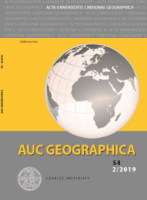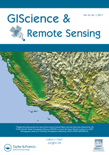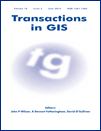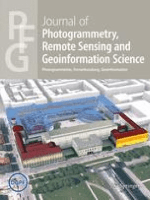
Applied Geomatics
Scope & Guideline
Connecting disciplines through rigorous research in geomatics.
Introduction
Aims and Scopes
- Geospatial Analysis and Modeling:
The journal extensively covers research that utilizes geospatial analysis and modeling techniques to solve complex spatial problems, including urban planning, resource management, and environmental monitoring. - Remote Sensing Applications:
Applied Geomatics publishes studies that leverage remote sensing technologies for applications such as land cover classification, environmental monitoring, and disaster management, highlighting the integration of satellite and aerial imagery. - Decision Support Systems:
The journal focuses on the development of decision support systems using multi-criteria decision analysis (MCDA) and other frameworks to enhance decision-making processes in various fields, including urban planning and environmental management. - Groundwater and Resource Management:
A significant portion of the research addresses groundwater potential assessment, recharge modeling, and resource management, applying advanced geospatial techniques and analytical processes. - Machine Learning and Artificial Intelligence in Geomatics:
There is a growing emphasis on the integration of machine learning and artificial intelligence techniques for improving geospatial data analysis, classification, and predictive modeling.
Trending and Emerging
- Integration of Artificial Intelligence and Machine Learning:
There is a marked increase in studies that apply AI and machine learning techniques to enhance geospatial data analysis, improve classification accuracy, and facilitate predictive modeling, indicating a trend towards automation in geomatics. - Use of Unmanned Aerial Vehicles (UAVs):
Research utilizing UAVs for mapping, monitoring, and data collection has surged, showcasing their effectiveness in various applications from urban planning to environmental monitoring. - Climate Change Impact Assessment:
There is a growing focus on assessing the impacts of climate change using geospatial technologies, particularly in relation to land use changes, resource management, and environmental sustainability. - Advanced Remote Sensing Techniques:
Emerging methodologies in remote sensing, including the integration of SAR data and advanced image processing techniques, are increasingly being explored to address complex environmental challenges. - Geospatial Decision Support for Disaster Management:
The trend towards developing geospatial decision support systems specifically for disaster risk reduction and management is becoming more prominent, reflecting the need for enhanced preparedness and response strategies.
Declining or Waning
- Traditional Surveying Techniques:
There has been a noticeable decline in the publication of research focused solely on traditional surveying techniques, as the field has increasingly shifted towards the application of advanced technologies such as UAVs and GNSS. - Basic Land Use Planning:
Research papers concentrating on basic land use planning without the integration of advanced geospatial tools and methodologies have become less frequent, indicating a move towards more complex analyses involving multi-layered data. - Static Geographic Information Systems (GIS) Applications:
The focus on static GIS applications, which do not incorporate dynamic data or real-time analysis, is diminishing as there is a growing demand for more interactive and real-time geospatial applications.
Similar Journals

Geomatik
Fostering collaboration for impactful geomatic research.Geomatik is a pioneering open-access journal dedicated to advancing the field of geomatics, encompassing disciplines such as geospatial data analysis, remote sensing, and geographic information systems. Founded in 2016 by the esteemed Geomatik Journal publisher, this peer-reviewed platform aims to disseminate high-quality research and innovative methodologies to a global audience. With its E-ISSN 2564-6761, Geomatik facilitates accessibility to cutting-edge studies that address vital challenges in environment monitoring, urban planning, and spatial data management. The journal not only encourages collaboration among researchers and practitioners but also serves as an essential resource for students seeking to deepen their understanding of geomatic sciences. Its commitment to open access fosters scholarly exchange and enhances visibility for authors, contributing to significant advancements within the geomatics community.

Geocarto International
Shaping Tomorrow's Geography with Cutting-Edge InsightsGeocarto International is a premier peer-reviewed journal published by Taylor & Francis Ltd that focuses on the intersection of geography, planning, and environmental science, offering valuable insights into emerging research trends and methodologies within these fields. With an impressive impact factor, the journal is consistently recognized for its contributions, ranked in the Q1 category for Geography, Planning, and Development as well as Q2 in Water Science and Technology as of 2023. Geocarto International not only showcases high-quality research articles but also embraces Open Access publishing since 2023, promoting accessibility and fostering a global dialogue among researchers, professionals, and students. Spanning over three decades from its inception in 1986 to 2024, the journal continues to serve as an essential platform for disseminating knowledge, advancing scholarly communication, and addressing crucial environmental challenges across the United Kingdom and beyond. Explore the latest advancements and contribute to the dynamic discussions shaping the future of geography and environmental sciences through Geocarto International.

GeoMedia
Navigating the Dynamic Landscape of Geography and MediaGeoMedia, with ISSN 1128-8132, is a prominent peer-reviewed journal published by MEDIAGEO SCIENCE & TECHNOLOGY PUBLISHING, specializing in the interdisciplinary field of geographical information and media studies. Since its inception in 2005, the journal has embraced an Open Access model, ensuring that cutting-edge research remains accessible to a global audience. Based in Rome, Italy, GeoMedia aims to bridge the gap between geographic data and its applications in media, technology, and societal contexts, fostering innovative research that impacts both academia and industry. With a commitment to contributing to the advancement of knowledge, it encourages submissions that explore theoretical frameworks, case studies, and empirical investigations showcasing the multifaceted relationship between geography and media. GeoMedia stands as a vital resource for researchers, professionals, and students who are keen on exploring the dynamic interplay between geographical phenomena and media technologies.

Geosaberes
Innovating Understanding of Local and Global PhenomenaGeosaberes is a pivotal open-access journal published by the Geography Postgraduate Program at the Federal University of Ceará, dedicated to advancing the field of geography through the dissemination of high-quality research and critical discourse. Since its inception in 2010, this journal has actively supported the global academic community by providing accessible research findings and theoretical insights that contribute to the understanding of geographical phenomena. With a strong focus on interdisciplinary studies and local contexts, Geosaberes invites contributions from both emerging and established scholars, fostering dialogue and collaboration among researchers, professionals, and students worldwide. The journal strives to publish articles that reflect innovative ideas, enhance academic understanding, and promote sustainable practices in geography, thereby solidifying its role as an influential platform within the field.

AUC Geographica
Navigating the Complexities of Our PlanetWelcome to AUC Geographica, a distinguished journal published by CHARLES UNIV PRAGUE, KAROLINUM PRESS, focusing on the expansive and interdisciplinary fields of Earth and Planetary Sciences, as well as Geography, Planning, and Development. With an ISSN of 0300-5402 and an E-ISSN of 2336-1980, this Open Access journal has been freely accessible since 2010, allowing researchers, professionals, and students to engage with high-quality scholarly articles without barriers. As of 2023, it holds a Q4 ranking in its respective categories, reflecting its commitment to contributing to the academic discourse despite competitive landscapes. Located in Prague, Czech Republic, at OVOCNY TRH 3/5, PRAGUE 1 116 36, AUC Geographica aims to foster collaboration and innovative research in the multifaceted relationships between human activities and the natural environment. With a publication history spanning from 1975 to 2024, this journal continues to be a vital resource for those seeking to advance knowledge and explore new dimensions in geography and Earth sciences.

Bulletin of Geography-Physical Geography Series
Fostering global collaboration in physical geography research.The Bulletin of Geography-Physical Geography Series is a prominent open-access journal dedicated to advancing the field of physical geography. Published by Nicolaus Copernicus University in Poland, this journal has been a vital resource for researchers, professionals, and students alike since its inception in 2009. With an ISSN of 2080-7686 and an E-ISSN of 2300-8490, it contributes significantly to the academic discourse in geography, planning and development, and geophysics, boasting a 2023 Scopus rank of #385 in Social Sciences and #84 in Earth and Planetary Sciences. The journal aims to disseminate innovative research and critical insights that address contemporary challenges in physical geography, making it a valuable platform for those seeking to contribute to or stay informed about the latest developments in the field. With its commitment to quality and accessibility, the Bulletin of Geography-Physical Geography Series plays a crucial role in fostering scholarly exchange and collaboration globally.

GIScience & Remote Sensing
Innovating Solutions for a Changing PlanetGIScience & Remote Sensing, published by Taylor & Francis Ltd, stands as a leading journal in the realm of Earth and Planetary Sciences, holding a prestigious Q1 ranking. Since its transition to Open Access in 2022, the journal has significantly broadened its reach, enabling researchers, professionals, and students across the globe to disseminate and access cutting-edge research related to geographic information science and remote sensing technologies. With a focus on publishing high-quality, peer-reviewed articles that contribute to the understanding of the Earth’s processes, environments, and interactions, this journal not only supports advancements in scientific knowledge but also fosters interdisciplinary collaboration. Based in the United Kingdom, GIScience & Remote Sensing continues to pave the way for innovative methodologies and applications, solidifying its vital role within the scientific community.

Boletim de Ciencias Geodesicas
Connecting Researchers with Groundbreaking Geodetic InsightsBoletim de Ciências Geodésicas is an esteemed academic journal published by the Universidade Federal do Paraná within its Centro Politécnico. Focused on the dynamic field of Earth and Planetary Sciences, this Open Access journal has been a pivotal resource since 1997, fostering the dissemination of critical research and innovative methodologies. With an impact factor indicative of its relevance in the discipline, Boletim de Ciências Geodésicas ranks in the Q3 quartile for Earth and Planetary Sciences as of 2023, showcasing its commitment to quality scholarship in a competitive field. Researchers and students alike will benefit from access to cutting-edge findings, given its broad scope that encompasses various aspects of geodesy and related sciences. The journal's convergence of research from 2005 to 2024 ensures that it remains at the forefront of emerging trends and fundamental developments in the discipline, further enhancing its esteemed reputation in the academic community.

Transactions in GIS
Innovating Methodologies for Earth and Planetary SciencesTransactions in GIS is a premier academic journal published by WILEY, dedicated to advancing the field of Geographic Information Science (GIS). With an ISSN of 1361-1682 and an E-ISSN of 1467-9671, this journal has continually contributed valuable insights since its inception in 1996, transforming the landscape of GIS research and application. Covering a broad scope within Earth and Planetary Sciences, it holds a notable Q2 ranking and stands in the 74th percentile among its peers as per Scopus rankings. The journal serves as a critical platform for researchers, professionals, and students who seek to disseminate and engage with innovative GIS methodologies, applications, and theoretical advancements. With a commitment to quality and rigor, Transactions in GIS remains a vital resource for those at the forefront of geographic research and analysis.

PFG-Journal of Photogrammetry Remote Sensing and Geoinformation Science
Advancing Knowledge in Photogrammetry and Remote SensingPFG-Journal of Photogrammetry Remote Sensing and Geoinformation Science, published by Springer International Publishing AG, stands as a prestigious peer-reviewed journal at the intersection of cutting-edge technology and the vital disciplines of Earth and Planetary Sciences, Geography, and Instrumentation. With an impressive impact factor and ranking within the Q1 category, this journal regularly publishes innovative research, methodologies, and case studies that drive advancements in the field. As of its converged years from 2017 to 2024, the journal focuses on the latest trends in photogrammetry, remote sensing, and geoinformation science, providing a crucial platform for researchers, professionals, and students alike. Its open access model ensures that findings are widely accessible, fostering collaboration and knowledge dissemination throughout the global scientific community. Located in Switzerland, geographical and technological diversity is embraced, making the PFG Journal an essential resource for those dedicated to exploring the complexities of our planet and contributing to sustainable development.